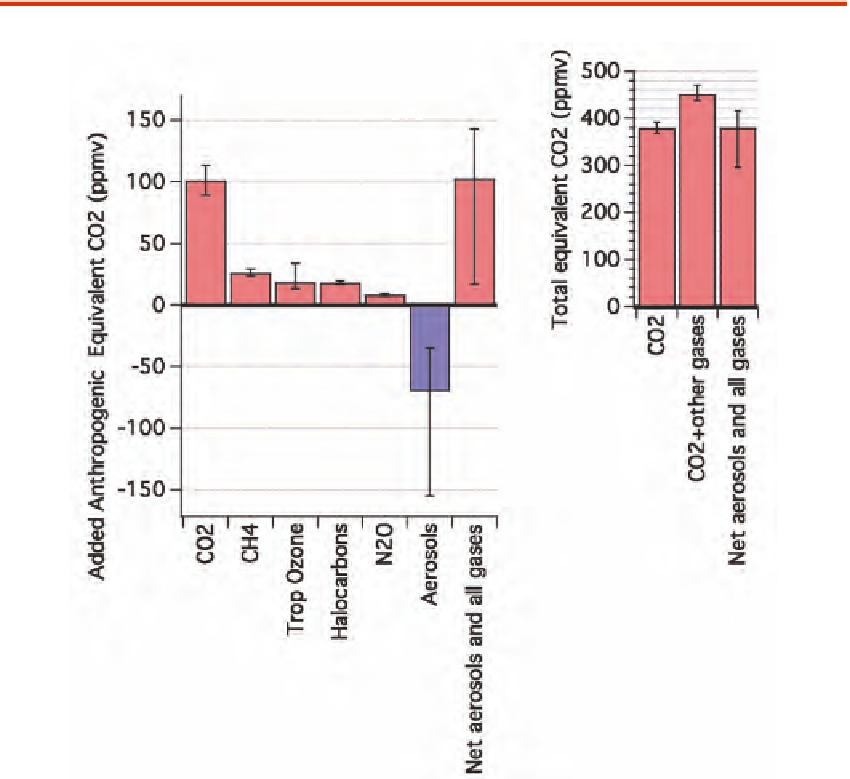Environmental Engineering Reference
In-Depth Information
25 ppmv of CO
2
equivalent (see Figure 2.1). From about 1998 to 2007,
methane concentrations remained nearly constant (Forster et al., 2007).
However, methane began to increase after 2007. In the absence of mitiga-
tion, methane is expected to continue to make significant contributions to
climate change during the 21st century (see Section 2.2).
FIGURE 2.1 (left) Best estimates and very likely uncertainty ranges for aerosols and gas contributions to
CO
2
-equivalent concentrations for 2005, based on the radiative forcing given in Forster et al. (2007). All
major gases contributing more than 0.15 W m
-2
are shown. Halocarbons including chlorofluorocarbons,
hydrochlorofluorocarbons, hydrofluorocarbons, and perfluorocarbons have been grouped. Direct effects of
all aerosols have been grouped together with their indirect effects on clouds. (right) Total CO
2
-equivalent
concentrations in 2005 for CO
2
only, for CO
2
plus all gases, and for CO
2
plus gases plus aerosols.

